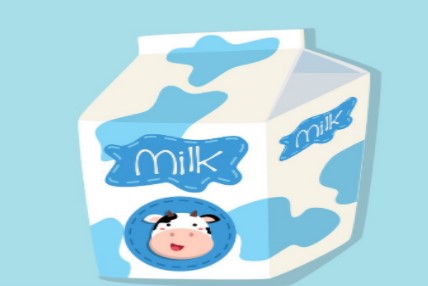News
Milk and human beings

It is against the law to sell milk with antibiotics.
Milk is tested frequently and antibiotics are very rarely found. In fact, milk tested positive in less than 2 out of every 10,000 tankers in 2016 (National Milk Drug Residue Database). Milk that has antibiotics is discarded.
When a cow is treated with antibiotics, farmers follow Federal guidelines on how long they must discard her milk in order to prevent drug residues in milk.
If a drug label does not say how long to discard milk, the farmer must work with a veterinarian to determine the proper time.
All sources of milk undergo testing overseen by the Minnesota Department of Agriculture to ensure it meets antibiotic safety standards.
Samples from individual farms are routinely collected and tested before milk is sold.
A sample from every milk tanker is tested at the processing plant before the milk is unloaded. Specific steps are used before sampling, like stirring the milk, to ensure that each sample best represents the milk in that tank.
Scientists and government officials review and approve the tests used to detect antibiotics in milk. These experts make sure the tests are able to detect even very, very low levels in milk.
Milk Consumption and Race
Because health and health disparities are closely linked to race in the U.S., groups have pushed back against dietary guidelines handed down by the federal government. Non-white Americans have much higher rates of lactose intolerance. In fact, according to the National Institutes of Health, “95 percent of Asians, 60 to 80 percent of African Americans and Ashkenazi Jews, 80 to 100 percent of American Indians, and 50 to 80 percent of Hispanics” are lactose intolerant.
A letter from the PCRM to the USDA and the Department of Health and Human Services argues that current dairy recommendations of three servings a day are far from being applicable to all Americans. The letter urged the agencies to update recommendations because "dairy products are not only unnecessary, but are likely to take a disproportionate health toll among persons of color."
The letter also connected dairy with high rates of prostate cancer. Levin, who works for the PCRM, says that “unfortunately, African American men have the highest prostate cancer risk in any American demographic group, which makes this, again, a racial issue.” The letter also cited concerns over other cancers, asthma, and fat and cholesterol.
At least one study has suggested that a gene that promotes calcium absorption and is found more often in populations of African origin could be contributing to disparities in prostate cancer. Others have explored the link between dairy and prostate cancer, but the link is far from yet definitive. Racial disparities in healthcare access could contribute to varying rates of cancer.
Canada’s dietary recommendations, which both Levin and Gardner cite as a better model, lists dairy as one of many sources of protein, and make water the “beverage of choice.” Gardner and Levin say the U.S. dietary guidelines are heavily influenced by agricultural and private interests. The Diabetes Guide to Foods of African Heritage limits dairy almost as much as sweets. My Native Plate, an initiative from the Indian Health Service, largely cuts dairy out in recommendations for people of Native American descent.
Dairy Dilemma
When it comes to incorporating cow's milk, it’s important to consider the context. As Gardner puts it, “people don't just drink dairy alone. They drink dairy instead of something, or with something. They eat cheese instead of something, with something.” For example, while someone who replaces sugary drinks with milk might be making a healthy choice, another person who already has a balanced, nutrient-rich diet and adds milk to it may not experience any added benefit.
That’s why plant-based milks, much like dairy milk, are optional. Since dietary calcium can come from leafy greens, soy and other foods, “if you wanted to switch to plant milk … you'd be better eating the almonds than the almond milk, you'd be better eating the cashews than the cashew milk. But people are buying this to pour on their cereal, because they grew up putting a white thing on a breakfast grain,” Gardner says. In other words, humans enjoy nutrients that come in some forms more than others, and are not necessarily concerned with what will give them their daily allotment.
CATEGORIES
LATEST NEWS
CONTACT US
Mobile:+86-18612182039
Tel:+86-029-85274126
Whatsapp:+8618612182039
Email:info@watarbio.com
Add:No. 12, Hongzhuan South Road, Yanta District, Xi’an 710061, China
